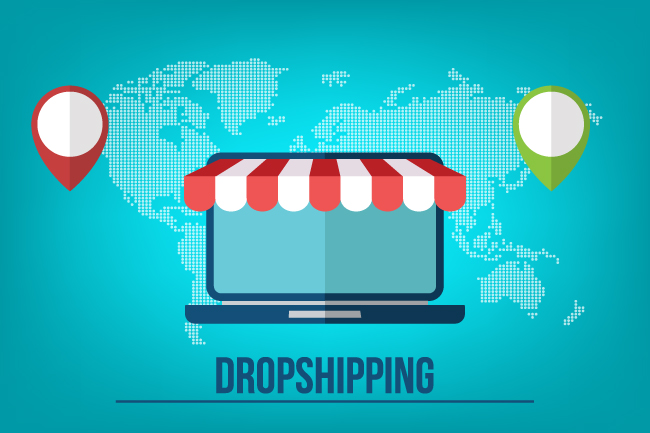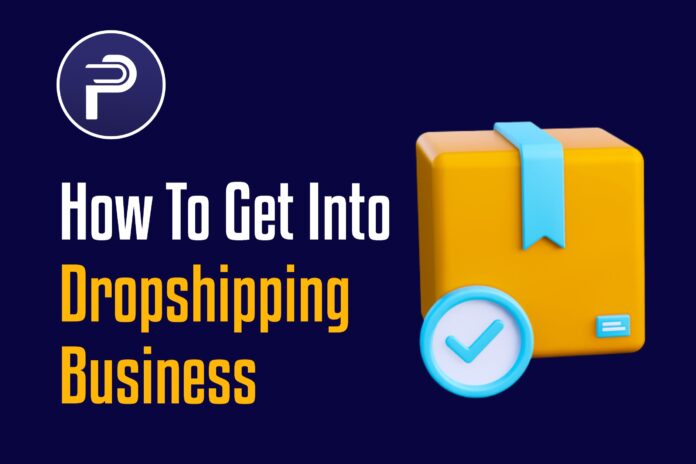Introduction
Have you ever heard about dropshipping? If you’re intrigued to know the way it works and interested in starting a dropshipping business, you’re in the right place. Dropshipping has gained popularity among entrepreneurs as a primary source of income or a side hustle alongside a regular job. In this article, we’ll look at what dropshipping entails and guide you on transforming it into a business that can be managed from any location.
What is dropshipping?

Dropshipping serves as a fulfillment service enabling retailers to sell products from manufacturers or suppliers without maintaining inventory at a physical location. Retailers collaborate with manufacturers or wholesalers having their own products and inventory. The retailer simply relays customer orders and details to the dropshipper, who handles packaging and shipping directly to the customer. This business model has gained popularity among entrepreneurs relying on e-commerce sites as their primary income source or as a side hustle alongside a regular job.
Must Read:How To Get into E-Book Publishing in Just 5 Steps
The upside of the dropshipping model
As with any business, there are some upside and downside to consider before starting. First, let’s take a look at some pros to dropshipping:
- Doesn’t require inventory: There’s no need to keep inventory on hand when buying from a manufacturer or supplier. They take care of all aspects of maintaining inventory—you don’t have at worry about it at all.
- You don’t have to manage fulfillment: You don’t have to worry about fulfilling your customer’s order. All you do is pass on the customer’s order and shipping information, and the dropshipper takes care of it from there.
- Requires low capital to start up: You don’t need to make a huge capital to start a dropshipping business. It may take only a small amount of cash to set up the business and then start earning money.
- You can offer a wide variety of products: You’re not limited to the types or number of products you can sell your customers—you can offer a wide variety without the worry or hassle of inventory and shipping. You also have the ability to change products if something doesn’t sell well.
- Not committed to inventory: As just mentioned, if something doesn’t sell, you don’t have to worry about unsold stock taking up room in a warehouse. You can choose a new product and possibly a new supplier, as well. You also have the freedom to test new products and see what sells the best.
- Mobility: It’s possible to run your business from anywhere in the world as long as you have internet access.
The downside of the dropshipping business model
After looking at the upside, you’ll also need to consider the downside in order to make an informed decision about running this type of business.There are some downsides to consider with dropshipping, which are:
- Low profits: Overhead for dropshipping is low; however, you’ll need to earn a profit to keep your business up and running. Remember that the manufacturer/dropshipper takes a cut of the profit, so be sure to figure this in to your business plan when it comes to expenses such as marketing, website expenses, operations, etc. Set realistic retail prices so you’ll make enough money to stay profitable.
- Competition is high: Don’t be caught off guard with the low overhead of this business model. Remember there’s a lot of competition out there. Competitors may be selling the same product you’ve chosen. Not only that, but if the competitor has a larger business, they can afford to price their product lower than yours, which effects your profit.
- Searching for a trustworthy dropshipping partner: You’ll need to look for trustworthy and reputable dropshippers. If you buy from a supplier who has poor products, your business and reputation will suffer. You need to ensure that the supplier runs a legitimate business. You’ll also need to watch out for companies that sell trademarked goods—make sure they have the right to sell these products, to avoid any trademark and/or copyright issues.
- Branding isn’t easy: You’ll need to brand your company, creating an identity that’s different from your competitors’. In addition, not all dropshippers will ship products with your company’s packaging. This could then become an extra cost.
As you can see, there are many pros and cons to consider before starting a dropshipping business. If you do your research and look for reputable partners, then it is possible to start a successful operation.
How to startup a dropshipping business
Now we’re ready to consider how to start a dropshipping business! Get ready for some in-depth research, business planning and more.
- Select your niche: You’ll decide on the type of products you’d like to sell. What is your e-commerce site about? What products would do well in this niche? What would be of interest to your customers? If you’re unsure, you may want to consider setting up a shop that sells a variety of items, then wait to see what sells best.
- What’s selling in the market: Next, you need to do some research to see what’s already selling well. You can check out the best sellers lists on Amazon—it’s a free way to check on competitors, popular products, pricing and more. Research your product ideas to find what’s trending and what products are popular.
- Search for dropshipping partners: Once you’ve chosen your products, you’ll need to find reputable dropshippers. There are dropshipping supplier platforms you can check out, the most popular of which are Shopify, AliExpress, SaleHoo and so on.
- Build an e-commerce website: Once you’ve done the research in steps one through three, you’re ready to build your e-commerce site (or begin using an e-commerce platform). You may need to create content to go with your site, such as a blog, item descriptions, etc. Be sure to have all of this in place before opening up to customers.
- Get a tax ID: You may need a tax ID to run your business, so be sure to check out the requirements in your country.
- Get ready to sell: Once everything is set up, you’re ready to sell. Have fun making money with your new business!
Conclusion
Keep in mind that, like any new business, you’ll encounter challenges and obstacles, which are a natural part of the process. Consider these challenges as opportunities for learning, enhancing your business, and evolving into a more adept entrepreneur.

